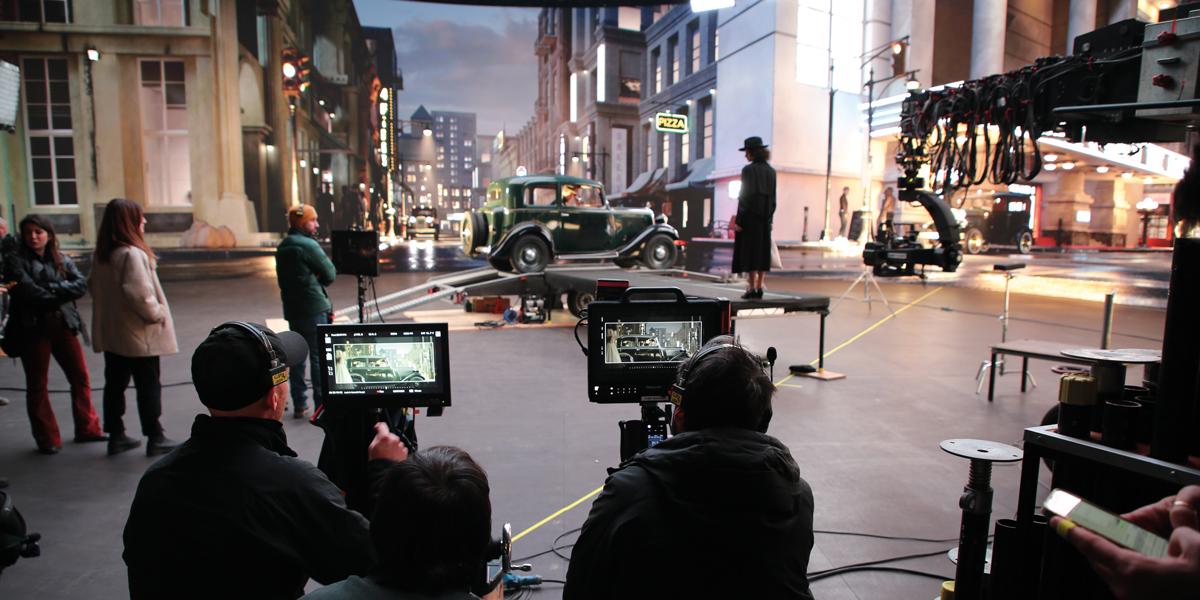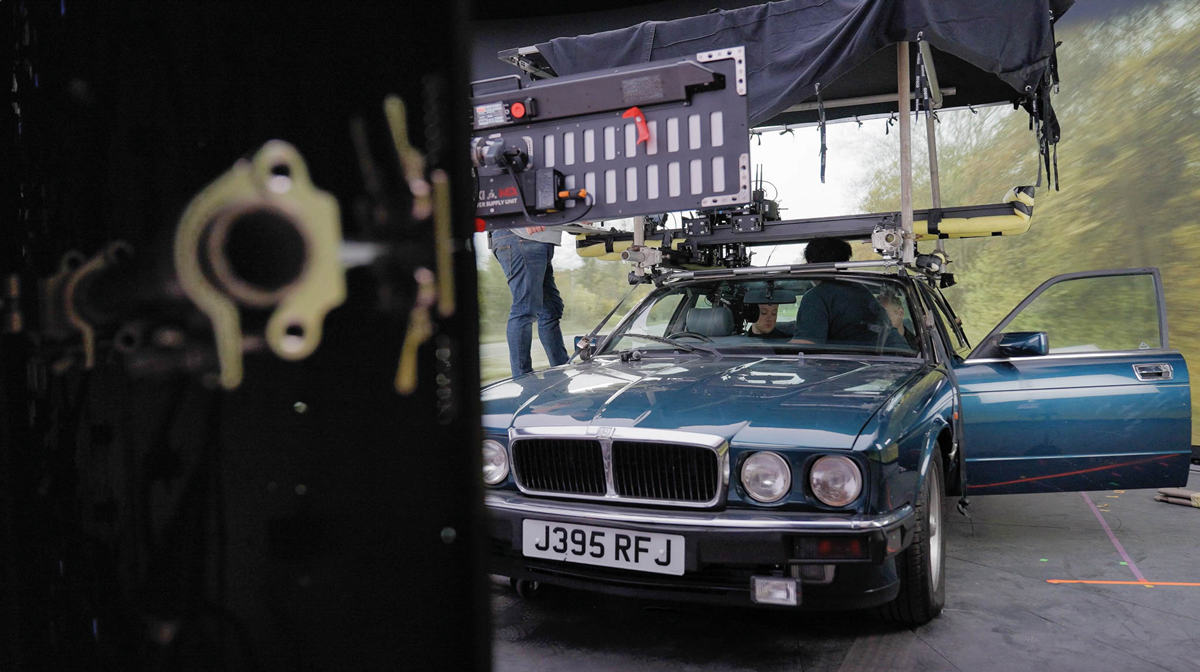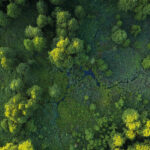
Driving Scenes: Virtual Production
Posted on Jul 1, 2024 by Samara Husbands
Travelling without moving
Creating compelling driving shots used to be a headache – but virtual production has reinvented the wheel. Adrian Pennington speaks to the pros
In-camera VFX, a crucial pillar of virtual production, offers a controlled environment for shooting simulated travel scenes. An ability to swap between locations and times of day on a whim means a project’s vehicle shots can be captured quickly – and all in one go.
“There are no weather constraints or requirements to schedule shooting at the end of the day in the desperate hope of shooting a key scene during golden hour: these results are guaranteed in VP,” says Jonathan Davenport, executive producer at October Media.
VP allows the director to reset at the click of a button. “If an actor fluffs their line or the director wants to shoot a second take, the vehicle doesn’t need to be taken back to the start location, which saves time and frustration,” says James Franklin, VP supervisor at Dimension.
Low loaders, the traditional means of car process shots, never quite look correct through the lens. “The vehicle sits too high on the horizon,” Franklin explains, “whereas the content on an LED wall can be adjusted vertically to get the correct horizon line. Content can also be spun 180° to shoot reverses or 90° to shoot side profiles. For city shoots, it’s much easier to shoot a 360° plate and take that into a volume, than shut down whole streets for a practical shoot.”
Since opening MARS Volume in 2021, the facility has seen a steady stream and increase in productions choosing LED stages over location (low loader) and green-screen shooting to achieve highly realistic driving sequences.
“Drive under a bridge, and see the shadow of the bridge pass right over the top of the vehicle,” says Bild Studios CCO Joanna Alpe. “No green spill means achieving natural skin tones and colour management is a breeze here when compared with green screen.
“Time and time again, directors will tell us that access to the actors in the vehicle makes a huge difference, allowing them to easily take bathroom breaks, get refreshments and take direction with ease as opposed to the restricted access of a low loader.
“You can shoot at any time of day, in any hard-to-access location,” she says, “such as airport runways or Oxford Street at Christmas time for example.”
October Media is a production service company based in Norfolk that offers a fleet of US action vehicles, virtual production capabilities, studios, workshops, standing sets, crewing and early scheduling/budgeting facilities.
“Driving scenes shot using VP unshackle filmmakers from the many constraints of shooting on real roads, using traffic management and low loaders that never seem to have enough seats for all the crew,” says Davenport. “They can achieve the precise look they want using multicamera plate shots from libraries like drivingplates.com displayed on the LED volume.
“The interactive nature of lighting also enables artists to perform dangerous actions while appearing to drive as passing scenery is reflected in their eyes. Add to this that productions enhance their sustainability credentials by not travelling to locations!”

Tips from the experts
Bigger isn’t always better when it comes to car process shoots on a virtual production stage. “Great results can be achieved with a fairly modest volume,” says Franklin. “DOPs need to be careful of any reflections showing any seams in the volume – such as gaps between the wall panels and the ceiling panels. Wild walls (movable wall panels which can also tilt up and down) are a useful addition in this respect. Moiré is also something to watch out for, especially in the windscreen.”
Davenport warns of purely relying on the LED volume and practical lighting to create the look for driving sequences. “We’ve seen the best results achieved when practical SFX are deployed alongside VP,” he says. “It can be as simple as having a car window open with wind FX moving an artist’s hair as they travel in the car, or the use of rain FX striking the windscreen. These additional practical textures enhance the realism of a scene immeasurably.”
Elements that productions should pay attention to are: drive-in access for vehicles, size of volume (not too big, not too small: the Goldilocks zone), movable LED walls and a manoeuvrable ceiling that can be raised. Studios like MARS Volume complement this with an agile video playback system that syncs to turntables, camera and lighting fixtures.
That’s not to say it’s all plain sailing. Alpe’s advice for DOPs working in this environment is to plan, plan and plan. “Previsualisation is key – knowing where the car needs to be in relation to the screen is important to ensure correct reflection and lighting coverage. We’ve developed a pre-production workflow to support DOPs in this regard.
“Ensure you have adequate pre-light time and allow plenty of time for tweaks. This is the opportunity to play with the medium, see how the light and reflections dance over the metallic vehicle, and maximise these features for creative effect,“ she advises.
“Keep an eye on the blend zones on camera stitches. As with compositing plates in using traditional VFX pipelines, you have to be careful you don’t capture the blend zones in-camera, in your shots. Working with experienced and astute operators easily overcomes this.”
The road ahead
Virtual production technology is one of the fastest moving in the industry. So it’s worth asking, where is the tech headed?
“We will see archive libraries increase their offerings of driving plates and the generation of plates with period looks,” Davenport thinks. “This is particularly exciting for filmmakers who are looking to enhance production value and generate scenes with period cars or landscapes in the background of their scenes.”
Alpe points to advances that will make ICVFX more accessible, specifically when it comes to environment creation, and ensures that a portion of MARS Volume’s bookable days are set aside for R&D.
Recent releases of Unreal Engine have now enabled playback at 16K EXRs in real time. “This increase in resolution looks spectacular on the wall,” says Franklin, “and the increased colour depth means that we can colour correct shots far more accurately, keeping details in both the highlights and shadows.”










